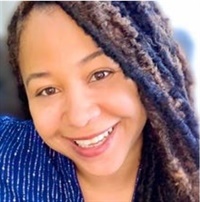

Watch Varleisha Gibbs, PhD, OTD, OTR/L, renowned self-regulation expert and author for this intensive 2-day certificate training and learn clinically proven neurological approaches to addressing self-regulation in children and adolescents diagnosed with Autism, Sensory Processing Disorder, and ADHD. Knowing the underlying brain connections will help you better select and develop appropriate interventions for challenging behaviours, such as hyper-activity, hypo-activity, aggressiveness, self-stimulatory and inattentiveness.
You will walk away with neurologically tailored sensory strategies, cutting-edge treatment techniques, and sensory equipment strategies, including, mindfulness, social skill programs, music and movement, and respiratory-based techniques.
On day one, you will learn the underlying neurological components to connect the brain to clinical practice through:
The second day, you will learn how to analyze and apply treatment techniques, such as:
Whether you are an expert on the brain or new to this science, Dr. Gibbs makes it easy to understand and easy to implement. You will leave ignited by revelations exposed in Dr. Gibbs’ presentation!
| File type | File name | Number of pages | |
|---|---|---|---|
| Manual - Neuroscience and Self-Regulation Techniques for Kids (72.68 MB) | 130 Pages | Available after Purchase |

Varleisha D. Lyons (formerly Gibbs), PhD, OTD, OTR/L, ASDCS, is an occupational therapist and author with over 20 years of experience working with children and adolescents diagnosed with Autism Spectrum Disorder, sensory processing disorders and neurological disorders. She developed and founded Delaware’s first occupational therapy program and became the first black indigenous American woman to serve as the Scientific Programs Officer at the American Occupational Therapy Foundation. Currently, she is the Vice President of Diversity Equity Inclusion Justice Access and Belonging at the American Occupational Therapy Association (AOTA).
Varleisha continues to lecture and provides training on sensory processing strategies and self-regulation to practitioners, parents, and teachers throughout the country and internationally. As co-author of Raising Kids with Sensory Processing Disorders, she has provided families with strategies to understand and care for their children. Dr. Lyons is the developer of the Self-Regulation and Mindfulness program and author of the best-selling book, Self-Regulation and Mindfulness: Exercises and Worksheets for Sensory Processing Disorder, ADHD, and Autism Spectrum Disorder (PESI Publishing & Media). She is the co-author of Trauma Treatment in ACTION: Over 85 Activities to Move Clients Toward Healing, Growth and Improved Functioning (PESI Publishing & Media). Her areas of expertise include neuroanatomy, self-regulation strategies across the lifespan, health inequities, and trauma responsive approaches.
Disclaimer: The views, thoughts, and opinions expressed in this presentation belong solely to the author, and not necessarily to the author's employer, organization, committee or other group or individual. Varleisha D. Lyons PhD, OTR/L is employed by the American Occupational Therapy Association (AOTA). This work is independent of her role and not affiliated with AOTA, Inc.
Speaker Disclosures:
Financial: Dr. Varleisha Lyons has employment relationships with the American Occupational Therapy Association and VDTG, Inc. She receives royalties as a published author. Dr. Lyons receives a speaking honorarium, recording and book royalties from PESI, Inc. She has no relevant financial relationships with ineligible organizations.
Non-financial: Dr. Varleisha Lyons is a member of the American Occupational Therapy Association and the National Black Occupational Therapy Caucus. She serves on the advisory board of George Washington University Programs in Occupational Therapy and is a board member of the National Association for Hearing and Speech Action.
The Neuroscience Behind Self-Regulation
Neuro and Sensory Integration: Linking to Behaviours
Video Case Study Analyzation: Aligning Symptoms and Characteristics with Appropriate Interventions
Self-Regulation Techniques and the Vagus Nerve Connection
Apply Neuroscience to Interventions: Hands-on Activities
Treatment Planning: Video Case Examples of Children Displaying Challenging Social, Eating and Sleep Behaviours
Psychoeducation for Clients and Parents
Please wait ...